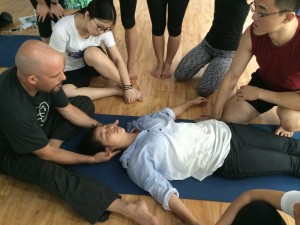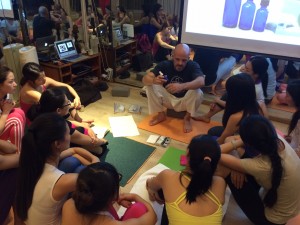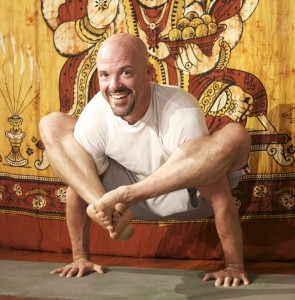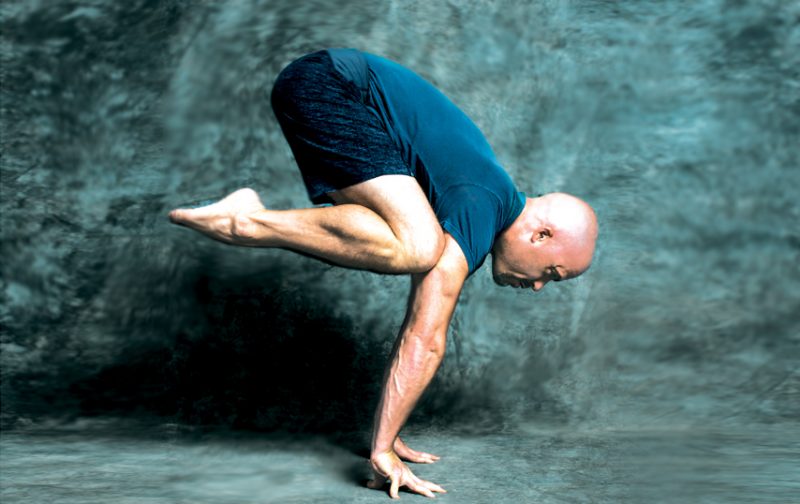Richard Girolami has been studying and working on the human body for more than 20 years, training in many forms of hands on therapy, movement, sport, meditation and bodywork. He is qualified in kinesiology and wellness hold a Masters degree in Traditional Chinese Medicine. His techniques combined with his intuitive interactive approach empower his students to break old patterns creating new opportunities for the body to heal itself. Asana interviewed richard about his journey in this path.
 The Practice
The Practice
Asana: How did you develop your interest in movement, sport, meditation and bodywork?
Richard: When I was a young teen I had pretty severe asthma. It effected my movement and sports and kept me from some activities. One day my mother took me to see an acupuncturist and he put needles in the top of my head. I never had asthma again. Really. I was also so fortunate to travel with my family and be exposed to diverse cultures and different disciplines including: yoga, traditional healing methods, martial arts, spiritual practices and alternative medicines.
Asana: Do you focus your practice on movement and bodywork?
Richard: Both my personal movement practice and my work with clients take a breath centered approach. I believe the breath is fundamental to growth, prevention and healing.
Asana: How do you see your practice evolve over the years?
Richard: It has been 14 years since my first yoga class and more than 20 years since my first anatomy classes. I have noticed a stronger ability to trust and listen to my body. In my younger years I would push too hard or try to power through difficult situations, now I am exploring more subtle avenues. The breath has become more and more central to me each day.
Asana: What is your typical practice?
Richard: My practice changes frequently. I do have some stretches and warm up that I have been using for years as well as regular seated meditation. I don’t like to do too much repetitive activity so I’m always going to different types of classes and appreciating different teachers, schools, styles and environments. Exploring, breathing and having fun moving in as many ways as possible. Always looking for tight or weaker areas to focus on and trying never to compare myself with others.
 The Teaching
The Teaching
Asana: What is Five Senses Therapy? What transpired you to devise this practice?
Richard: When I combined everything I learned and used it with my clients, it was very effective but I didn’t know what to call it so I named it Five Senses Therapy. It is a breath centered therapy method that uses elements of kinesiology, yoga, TCM, bodywork and aromatherapy to help people move towards optimal health. I’m basically assisting the client to make changes in their bodies, they are doing most of the work.
Asana: How do you apply your knowledge in kinesiology and wellness and traditional Chinese medicine in your teaching? Are they complimentary?
Richard: Most of my teaching is in yoga anatomy, therapeutic yoga, hands on techniques, general health practices and breath work. I have found it is best to give three explanations for any condition or situation:
- Anatomical details of the situation(muscles, tendons, bones, organs etc)
- Traditional or energetic details (acupuncture points, meridians, emotions, chakra, prana, chi etc)
- Experiential understanding through feeling of the area under discussion (person feels the isolated area when manipulated or moved).
These three combined give a unique and comprehensive understanding.
 Asana: What is the yoga scene in Honolulu? Is it influenced by the Polynesian culture?
Asana: What is the yoga scene in Honolulu? Is it influenced by the Polynesian culture?
Richard: Honolulu is a very diverse community with people from all over the world and many visitors each year. The yoga scene reflects this diversity. We have many styles of yoga and many teachers offering quality instruction. Polynesian culture and arts are beautiful and very sensitive to energy, the earth, stars and other living creatures. I see some similarities to how yoga helps people become more sensitive and both also fundamentally use the breath.
Asana: Having conducted training and practiced around the world, do you note any differences in, say, New York and China?
Richard: Wow! Yes each place and culture are so different. Yogis are happy people, I love it. As long as people breathe and move with some intention that is all that matters. I have found that many seem to want to focus on “the right way” or “the best way” a little too much. Yoga has a long tradition with many variations of styles and techniques and there are a million different types of bodies and situations out there. I try to encourage people to safely listen to their bodies and avoid believing there is only one way.
The Lifestyle
Asana: Hawaii has the perfect climate and relaxing environment. Does this lifestyle help your teaching and practice?
Richard: In Hawaii the energy from nature is very strong as we are isolated and protected by ocean on all sides. Most people here are spending a lot of time outside being active. We have many outdoor yoga classes in parks and on the beach where it is easy to enjoy the sun, air and beautiful climate. In Hawaii I am constantly reminded of our important connection to the earth and nature which helps me in all that I do.
Asana: What is your typical day when you are not traveling?
Richard: I’m always happy to come home after a trip. Some things I do right away are stock my refrigerator with ingredients from the farmers market, jump in the ocean, visit one of my favorite yoga classes, receive bodywork and catch up with friends and family. Otherwise if I’m not traveling I’m working with clients in my office or planning my next trip.
Asana: How does your family view and support your practice? Do you encourage them to practice yoga?
Richard: My family has always been very supportive of my work and lifestyle. My mother has been a body worker for many years. My sister is also a yogini and a registered yoga teacher. When I visit with my father I always get to work on him and we usually take a restorative yoga class together. I am so fortunate to have them.
Asana: How do you relax yourself? What is your favorite pastime?
Richard: I love to do yoga, surf and be at the beach. I also like to read, cook, build things, fix things and garden when I have time. If I am under a lot of stress I will receive bodywork to help me realign and regain optimal function.
 The Way Forward
The Way Forward
Asana: If you could have done it all over again, would you follow the same path?
Richard: I would not change anything. Even my younger years when I was exploring what I wanted to do and during my “unhealthy” period when health wasn’t a top concern taught me so much. If anything I would have started practicing yoga in high school.
Asana: What are the changes you wish to see in your practice, teaching and life in general – physical, emotional or energetic?
Richard: My focus these days is on growth. Continuing to grow in all areas of my life and developing a meaningful balance between exploration, stability, power, flexibility and vulnerability. I’m working towards keeping that softness in body and mind that comes after a good practice, keeping that all the time. Deeply connecting with people and a sense of gratitude.
Asana: To where would you like to take your teaching?
Richard: I’m really loving working with students and clients one on one. Co-creating something new and specific with that person in that moment. I find this most profound and rewarding. I also love workshop format with a general topic where students drive the discussion details through questions and we all see where it ends up.
Asana: Is there a project you wish to accomplish?
Richard: I’m working on my first book which begins to explain my view of human wellness. It’s an amazing and broad topic so it’s a bit challenging. I am also collaborating with other teachers, practitioners and experts in related fields. Creating events and sharing experience for the benefit of all. Each time I learn something new and that helps me as well as all the people I work with.
To read the full article please download our Asana Journal App or purchase Issue 154 Oct 2015.




















 Other
Other